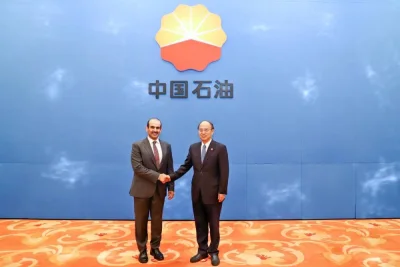China has waited for more than a quarter of a century to have its own oil futures. With the launch of the yuan-denominated oil futures - China’s first commodity derivative open to foreign investors – on March 26 at the Shanghai Futures Exchange, the world’s largest energy consumer is seeking more power in pricing crude sold to Asia.
China’s demand is already a key determinant of global oil prices.
Futures contracts fix prices today for delivery at a later date. While consumers use them to protect against higher prices down the line; speculators use them to bet on where prices are headed.
In 2017, oil futures contracts in New York and London outstripped physical trading by a factor of 23.
China’s push for oil futures gained impetus in 2017 when the world’s second largest economy surpassed the US as the world’s biggest crude importer. The Asian nation’s purchases reached a record high in January.
Chinese oil futures were proposed in 2012 following spikes above $100 a barrel, but prices in 2017 have averaged little more than $50. China introduced domestic crude futures in 1993, only to stop a year later because of volatility.
In recent years, the country repeatedly delayed its new contract amid turmoil in equities and financial markets. Such destabilising moves have often prompted China’s government to intervene in markets in one way or another.
Western oil traders are seen attracted to Shanghai’s oil contracts for the potential arbitrage between China’s market specifics and global oil fundamentals as reflected by US West Texas Intermediate (WTI) and international Brent crude futures.
WTI crude is the main benchmark for US crude grades and a crucial hedging tool for the US oil industry. Brent is priced off North Sea oil and is a primary value marker for Europe, Africa and Middle East crudes. Both futures contracts are commonly used by financial traders.
In a wider sense, the launch of oil futures holds significance for China.
Futures trading would wrest some control over pricing from the main international benchmarks, which are based on dollars. The country could also benefit from having a benchmark that reflects the grades of oil that are mostly consumed by local refineries and differ from those underpinning Western contracts.
Denominating oil contracts in yuan could also promote the use of China’s currency in global trade. It may take years for the yuan to undermine the dollar’s dominance in oil trading. But paying in yuan for oil could become part of President Xi Jinping’s “One Belt, One Road” initiative to develop ties across Eurasia, including the Middle East.
For sure, China wants its first-ever oil futures contract to be done just right, rather than too hot or too cold. While the country is eager to attract liquidity into the contract, the Shanghai exchange has safeguards in place to prevent a speculative blowout that could derail its credibility as a go-to reference price for the region.
But here is the most intriguing question. Can China’s oil contract be a serious challenger to the traditional benchmarks of the Brent in London and the WTI in New York?



